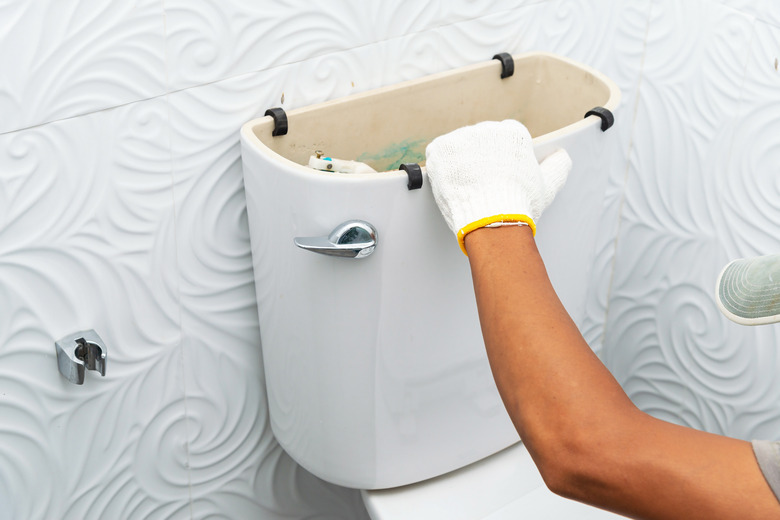How To Troubleshoot Toilet Flapper Issues
As canister-style flush valves become more common, the traditional toilet flapper may be headed for eventual extinction. But that won't happen this year or any year in the foreseeable future. Flappers are inexpensive, easy to repair, and they work, so manufacturers of budget water closets – aka toilets – continue to employ them.
Flapper styles vary somewhat, but the general idea is a rubber paddle that completely covers the siphon opening in the bottom of the toilet tank. When you flush the toilet, a flapper chain attached to the handle yanks the flapper off its mooring, allowing water to flow through the siphon hole. When the tank is empty, the toilet flapper settles back into position as the tank refills. Not much can go wrong but as Murphy's Law reminds you: If something can go wrong, it will. Fortunately, resolving flapper issues is easy and inexpensive.
A Yank of the Flapper Chain
A Yank of the Flapper Chain
The chain connecting the toilet flapper to the flush handle is the source of many flushing problems. If the chain is too long, the flapper won't lift all the way and will drop too soon, resulting in an incomplete flush. If the chain is too short, on the other hand, the flapper lifts too high and doesn't drop back into position. To prevent all the water from going from the fill valve straight down the drain, you have to lift the tank lid and manually reset the toilet flapper. Sometimes the chain simply falls off the handle or the flapper, and nothing happens when you flush the toilet.
You adjust the length of the flapper chain by disengaging it from the hook connecting it to the handle. Shorten it a link or two if you aren't getting complete flushing, and lengthen it by the same amount if the flapper won't reset. If the hook itself falls off the handle armature, use a pair of pliers to crimp the hook to hold it more securely. It's best to turn off the water shutoff to the toilet before doing any chain adjustment.
The Case of the Phantom Flusher
The Case of the Phantom Flusher
If your toilet fills valve switches on all by itself in the middle of the night, you've got a phantom flush. The number one reason for the phantom flush is a leaking flapper. The problem may be that the flapper chain is one or two links too short and doesn't allow the flapper to seat properly. But if your toilet is well used, the flapper may just be worn out.
Turn off the water and take the flapper off its mounting by disengaging its rubber ears from the overflow tube or sliding it up and off that tube after disengaging the flapper chain. Take it to the store to find a replacement. In most cases, an inexpensive universal flapper does the job. Some flush valves require specific flappers, though, so you might have to consult with the clerk at the hardware store to make sure you get the right one.
Some flapper leaks are too slow to notice, but they still waste water. If you suspect you have a flapper leak, try this test: Pour some food coloring in the tank, and avoid using the toilet for several hours or overnight. The test is positive if the bowl water takes on the same hue as the tank water.
Repairing a Flapper Versus Replacing It
Repairing a Flapper Versus Replacing It
Flappers cost less than $10 on average, so if your toilet is doing the phantom flush, it's usually better to replace the flapper than it is to try to repair it. However, if the flapper isn't that old, or you don't have time to make it to the store, you might be able to fix the problem by cleaning the flapper and flush valve. Rub the toilet flapper down with scouring powder and a sponge to remove all the mold and scale that may have collected on it, then do the same to the rim of the flush valve. It may help to run a bead of silicone caulk around the rim of the valve to make a better seal. If you do this, give the caulk at least eight hours to set before you set the flapper on it and fill the tank.
